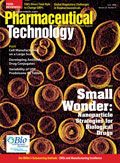Coming Down the Pike: Endocannabinoids
Scientists are uncovering signaling systems that operate via cannabinoid messenger molecules.
Anyone who lived through the '60s and remembers it undoubtedly had some experience—direct or otherwise—of tetrahydrocannabinol, the active ingredient in marijuana. The drug produces what many consider to be pleasant effects on the nervous system, the likely reason for its popularity. And that led to two general conclusions. The first was that the drug mimicked some chemicals that could be made and found within the human body, and second, that these endogenous cannabinoids would most likely be found in the brain.

Dorling Kindersley/Getty Images
After many years of research, scientists are in fact uncovering signaling systems that operate via cannabinoid messenger molecules. But much to their surprise, the collection of receptors and endogenous cannabinoids (endocannabinoids) are found more diffusely throughout the body.
In a review article in Nature Reviews Drug Discovery, Vincenzo Di Marzo, a member of the Endocannabinoid Research Group at the Institute of Biomolecular Chemistry, National Research Council in Naples, Italy, recounts the number of pathologies in which endocannabinoids have been associated and, presumably in which cannabinoids may offer some therapeutic benefits. These include pain and inflammation, immunological (autoimmune and allergic) disorders, neurological and neuropsychiatric conditions, obesity, metabolic, and cardiovascular disorders, cancer, and disorders of the gastrointestinal track as well as the liver.
The diversity of physiological systems and conditions regulated by endocannabinoids opens up a tremendous number of potential novel therapeutic interventions for a variety of diseases. At the same time, it opens up the possibility that each cannabinoid-based therapeutic will have a tremendous number of side effects.
In conclusion, says the author, "for those who are engaged in developing new therapeutics by targeting the endocannabinoid system, this task can be described by Giuseppe Verdi's definition (in La Traviata) of love as 'Croce e Delizia': a series of painstaking, and sometimes frustrating, efforts alternating with immense gratifications."
Source: V. Di Marzo, "Targeting the Endocannabinoid System: To Enhance or Reduce?" Nature Rev. Drug Disc. 7 (5), 438–455 (2008).

Drug Solutions Podcast: A Closer Look at mRNA in Oncology and Vaccines
April 30th 2024In this episode fo the Drug Solutions Podcast, etherna’s vice-president of Technology and Innovation, Stefaan De Koker, discusses the merits and challenges of using mRNA as the foundation for therapeutics in oncology as well as for vaccines.